This article may contain affiliate / compensated links. For full information, please see our disclaimer here.
If you only have one day in Amman, you can still visit most or even all the Amman highlights. Amman does not have endless tourist attractions, but as the capital of Jordan, this is where you can enjoy the best nightlife, visit bazaars, and taste local specialties. Amman is a must-see in Jordan, like Wadi Rum, Petra, or the Dead Sea. Amman is an easy capital to visit in the Middle East, and you cover the main attractions in one day. Apart from that, Amman is also a perfect place to make day trips to other highlights in Jordan and taste Middle Eastern food specialties. This travel guide gives you all the information about the best one-day itinerary in Amman.
- Is it worth visiting Amman?
- When is the best time to go to Amman?
- How to go by bus from Petra to Amman?
- Things to know about Amman
- Amman highlights: How to spend one day in Amman
- Where to sleep in Amman?
- Local tours in Amman
- Where to eat in Amman?
- The best day trips from Amman
- Other articles about Jordan
- Other posts about the Middle East
- Pin it for later!
- Other posts about Jordan
Is it worth visiting Amman?
Amman is not the most attractive city in the Middle East and is often not on the bucket list of travelers, but yes, you should visit it once you are in Jordan. Even if a place is not considered “beautiful” from the generic touristic point of view, it helps you get a better impression and understanding of the country, especially if it is the capital.
This is the same as visiting Iran without spending time in Tehran, which is also described as a grey, chaotic, and unattractive city. However, if you have more information about that, you often change your mind and actually grow to like the place.
Joining a local tour also makes you look at the city with different eyes. I did this in Amman (and Tehran as well), and they became one of my favorite spots in Jordan and Iran.
Plus, besides Beirut, Amman is the easiest city to enjoy the Middle East experience.
Tip: buy traditional handmade handicrafts at the Jordan River Designs shop aimed to help women in the countryside and support Jordanian cultural heritage
How to plan your trip to Jordan?
Flights: find the best flight deals on Skyscanner
Rent a car: Check Discover Cars‘ deals for driving around in Jordan (the best way to discover the country)
Insurance: Safetywing is a cheap insurance that covers all medical issues, including COVID-related ones. This is what I use every time.
Hotel/Hostel: Booking.com
Local tours and guides in Jordan: Toursbylocals, GetYourGuide and Viator offer several customized tours to Petra
When is the best time to go to Amman?
Amman lies in the hilly area of Jordan, 38 km from the Jordan River, at the edge of the desert areas of the Arabian Peninsula, 750 meters above sea level on a plateau. Due to its higher elevation, the summer heat is bearable in Amman, and the humidity is also lower. It can snow during winter, and the temperature can drop to zero. Amman is an ideal destination from spring to autumn (from March to October). However, as you want to combine your trip to Amman with other places to visit in Jordan, you need to consider choosing the best time wisely. If you plan hiking in the wadis, go between April and September, as most of them are closed in winter.
However, visiting Petra, and Wadi Rum, the main highlights of Jordan, with plenty of walking, can be unbearable during summertime.
All in all, if you visit other parts of Jordan apart from Amman, the spring and autumn months are a perfect choice.
How to go by bus from Petra to Amman?
If you are coming from Petra to Amman, you can use the daily Jett bus that departs at 5 pm and reaches Amman at 8 pm. It costs 10 JOD.
To make sure you have a ticket, buy your ticket online here. From the bus station, you can take a taxi downtown.
Things to know about Amman
Amman is one of the fastest-growing cities in the Middle East. Still, compared to other cities like Cairo and Damascus, it lacks the same cultural importance and is disappointingly modern and westernized. Amman consists of two parts: the conservative, traditional Islamic eastern part of the city (with the city center), where disadvantaged people live with huge Palestinian refugee camps on its edge. The western part of the city, with green residential streets, bars, trendy art galleries, cafes and bars, is an entirely different world. Jabal Amman (Jabal means hill) is an elegant neighborhood with embassies, cozy cafes, restaurants and hotels.
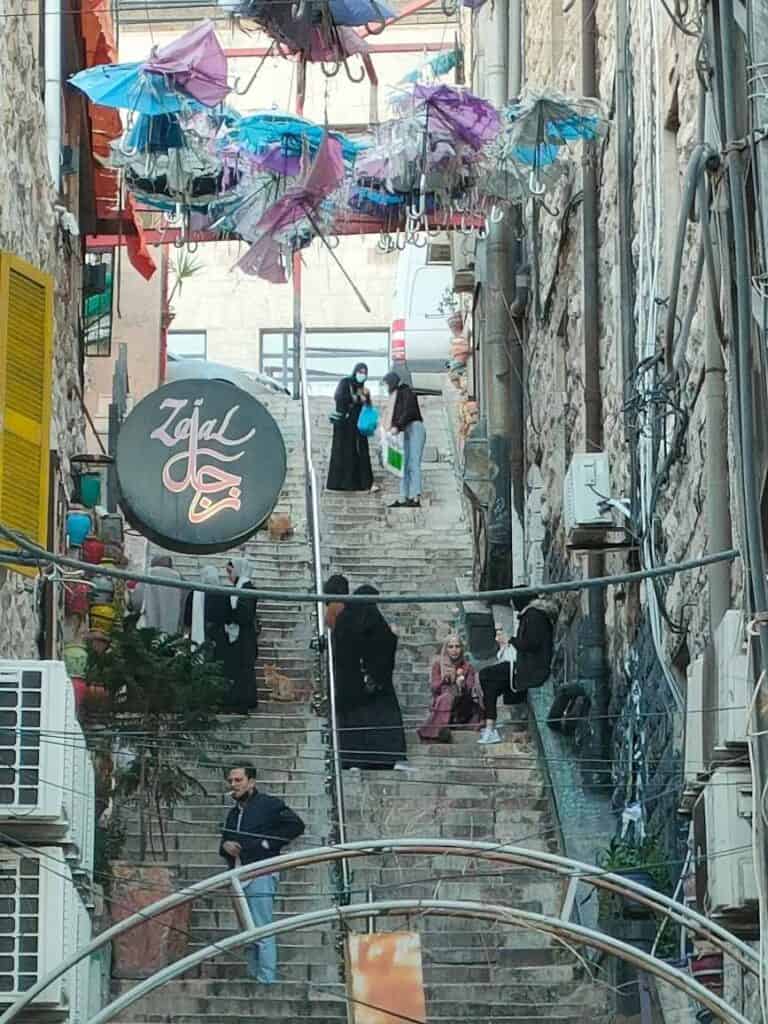
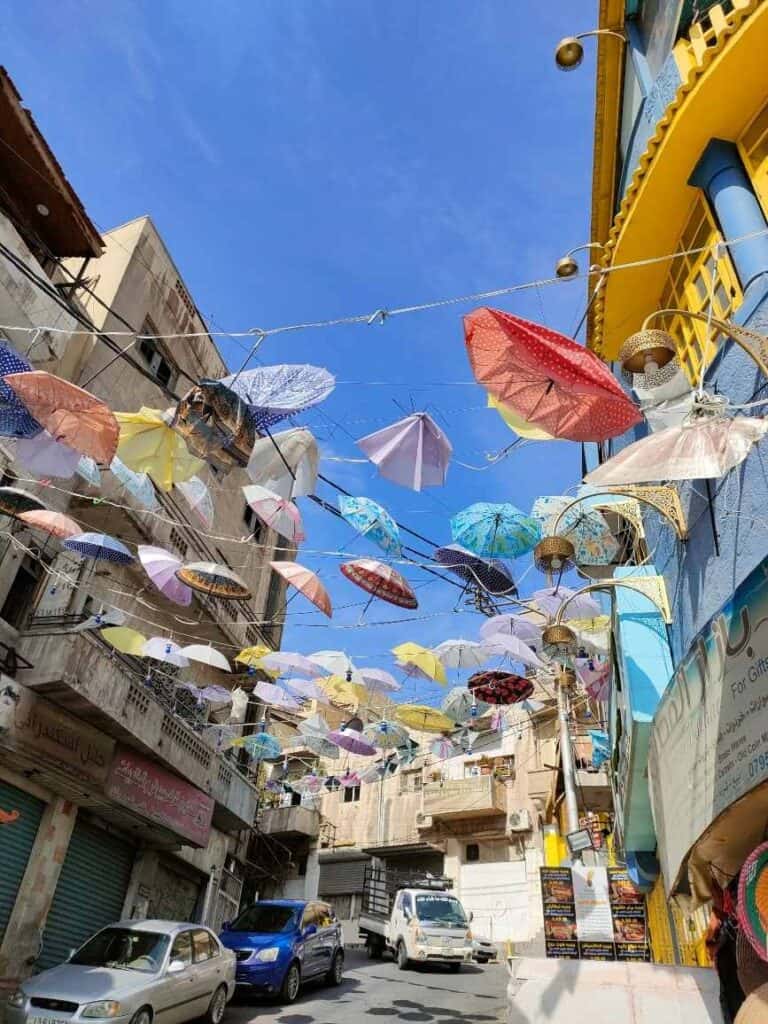
Since Amman is built on several hills, it is impossible to avoid steep up-and-down walks if you discover the city on foot. The roundabouts (“circles”) are the best navigation points in Amman. Taxi drivers usually identify their destination not by street names but by the nearest circle, hotel, or building. Countless yellow taxis drive around the capital. Although the first female taxi driver started working in 1997, there haven’t been many since then.
Amman receives a large amount of foreign investment that changes the face of the city. Most private houses and shopping centers were built from the white stone mined in the area, which makes Amman look clean and tidy.
From a small village, Amman developed into a world city. Initially, it was built on seven hills, but now it occupies 22, and the city’s provinces are mainly named after the mountains. Amman’s rapid transformation began in 1922 when King Abdullah moved his government here. Foreign commercial capital, investments, and the increasing number of refugees after the Arab-Israeli wars enabled spectacular development.
However, Amman is not where you find magical medieval bazaars or majestic mosques. It is not a city that immediately captures your heart, like Isfahan, Shiraz in Iran. Despite its expansion, it has more of a smaller town’s atmosphere but a modern creature that will attract you with its liveliness and cultural diversity.
It doesn’t mean that Amman has no long history. Quite the contrary. It was mentioned as Rabbath-Ammon in 1200 BC as the capital of the Ammonite Kingdom, part of the Egyptian Ptolemaic dynasty in the 3rd century. With the appearance of the Romans in 63 BC, it was part of the Decapolis group of cities. Finally, in 30 BC, it came under Herod’s control.
Emperor Trajan annexed the Nabatean kingdom to Rome in 106 and built the “Via Nova Traiana” in 111-114, along which the city developed into a prosperous caravan center. It was when the Romans added many public buildings, and the city lived its golden age as part of the province of Arabia. The Roman forum and theater date back to this time.
The Arabs occupied Amman in 638 as part of the Umayyad empire. Ammon. When Baghdad replaced Damascus as the capital with the rise of the Abbasid dynasty, Amman gradually began to decline and was entirely depopulated by the 13th century.
Until 1880, it was uninhabited.
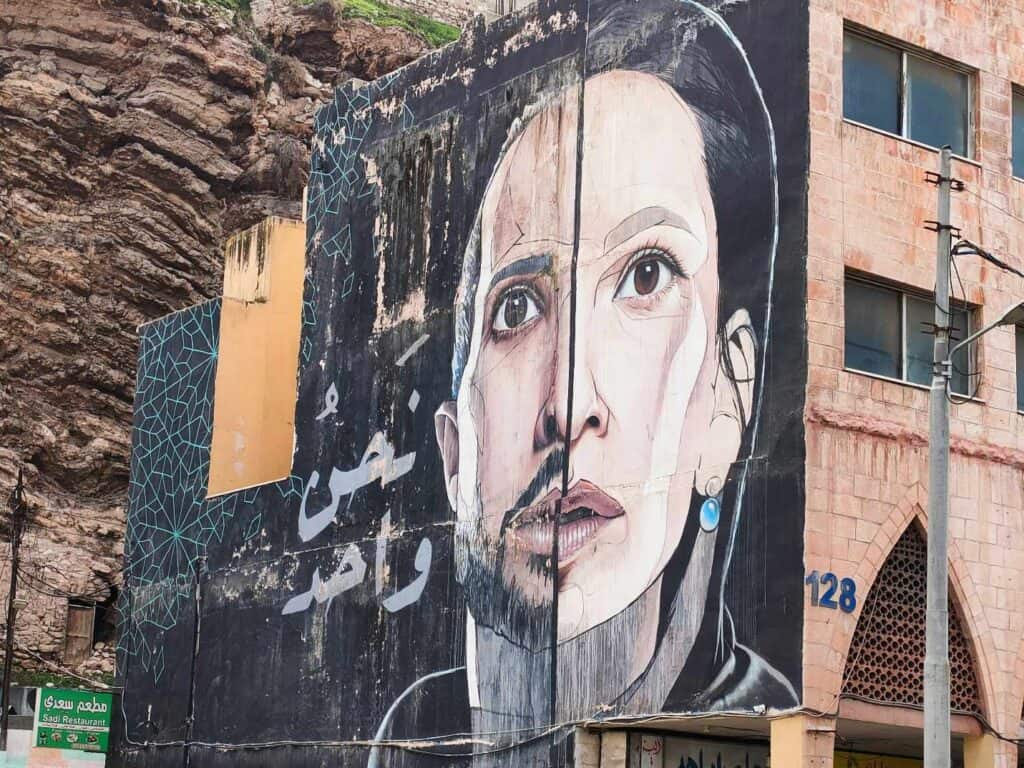
It brought a decisive change when the Ottoman Empire settled the Circassians, the Muslim Caucasian people expelled from Russia in 1864-1866 in Amman. British colonial minister Winston Churchill, and Abdullah ibn al-Hussein, the first ruler of Transjordan, decided to revive the ancient “Rabbath Amman”.
They made a plan for an independent Arab state, with Amman as its future capital.
Amman was a stop along the famous Hejaz railway, opened in 1908, that connected Damascus in Syria and Medina in Saudi Arabia. The railway lines are still seen in some parts of Amman. There are plans to convert it into a tree-lined promenade that would cross the city from north to south with cozy cafes, bicycle paths, and parks.
King Abdullah chose Amman as the headquarters of his new state, the Emirate of Transjordan, in 1921, and it was officially declared the capital of the Hashemite kingdom two years later.
The presence of many refugees (over 30% of the population) defines the image and daily life in Jordan. During the Arab-Israeli wars in 1948 and 1967, the Palestinian immigrants doubled Jordan’s population, and many settled in the capital, Amman. No other country received as many Palestinian refugees as Jordan. 100,000 mainly wealthy Iraqi refugees arrived during the Gulf wars and contributed to Amman’s striking transformation.
Lately, the Syrian Civil War and the expansion of ISIS pushed over 400 000 Syrian refugees to find refuge in the capital. This puts enormous pressure on urban planning and handling water shortage in the capital.
Recent immigrants are highly educated, and their open-mindedness has relaxed the conservative Islamic atmosphere. Amman became quite an open Arab city thanks to Iraqi immigrants and middle-class Jordanians.
Amman highlights: How to spend one day in Amman
1. The citadel of Amman with the best view of the city
The citadel was the ancient seat of the Ammonites, the site of Rabbath Ammon that lies on top of the Jabal al-Qala’a, the city’s highest point at 850 meters.
The city was encircled by 1,700 m long walls, and was rebuilt several times during the Roman, Byzantine, and Umayyad rule. Once, the acropolis, built in different periods and surrounded by walls and bastions, stood on this steep rock. The remains of the Roman era are also found along the road leading up to the citadel.
The amazing view of Amman itself is worth the visit to the citadel.
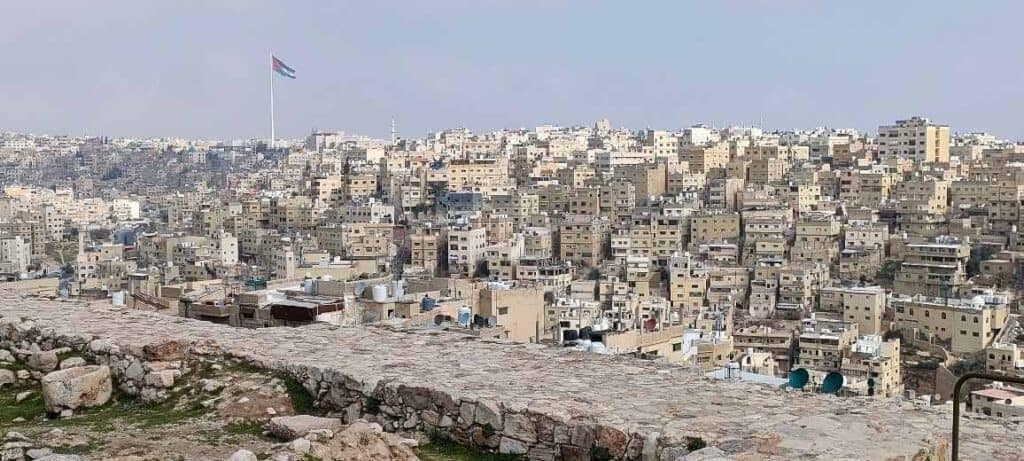
The Umayyad palace and the temple of Herodes are the citadel’s most important and beautiful parts.
The Umayyad Palace, built around 720, was the residence of the governor of Amman from the time of the Umayyad dynasty. Thus, it had several ceremonial quarters, residential parts, and the governor’s throne room. They only used the palace for 20 years until it was destroyed by an earthquake in 749 and was never completely rebuilt. The domed reception hall is the most well-preserved part that impressed the visitors even that time.
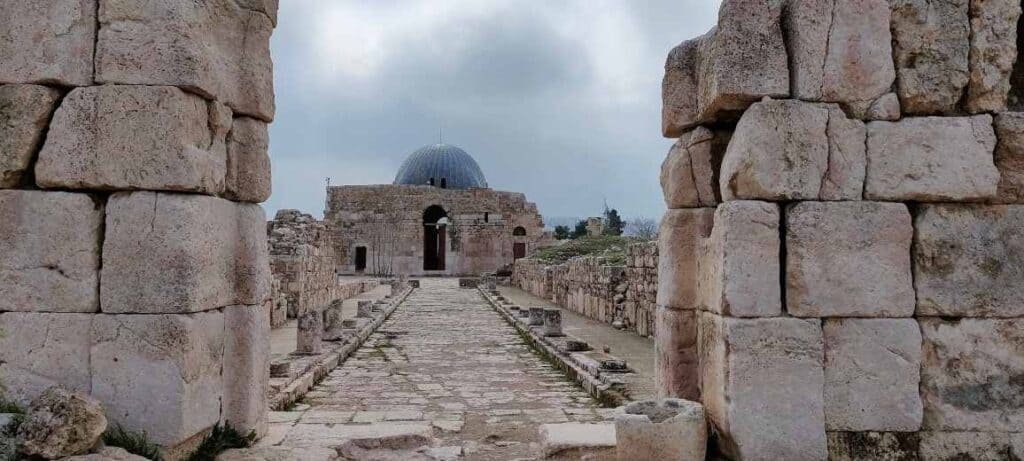
Only some columns are left from the Temple of Hercules, which was built on the site of the former sanctuary of an Ammonite deity. A 9m tall marble statue of Hercules stood in the church. You can spot the Abu Darwish Mosque of white and black stones from the nearby outlook. A tunnel connected the church built under Marcus Aurelius (161-180) to the forum and the lower town in Roman times because the nobility felt it beneath their rank to mingle with the crowd. The exact location and condition of the tunnel is a closely guarded secret. The locals mention it, but no one knows exactly where it is. Some say it doesn’t exist.
Streets aligned with colonnades, decorative arches, and the cistern that supplied water to the governor and the city are other attractions in the citadel. The cistern supplied drinking water to the palace and the surrounding town.
How to go there?
You can walk up to the citadel from downtown in approximately half an hour. On the way you can spot other Roman ruins. As I mentioned, it requires some steep ascent.
Entrance fee:
included in the Jordan Pass, otherwise, 2 JOD
Opening hours:
Summertime (April-September): 8am-7 pm
Wintertime: (October – March): 8am – 4 pm
Fridays year-round: 10am- 4 pm
2. The tallest flagpole in the world
After its inauguration in 2003, it was the world’s tallest flagpole at 127 meters, preceding the one in Abu Dhabi in the United Arab Emirates, which is 5 meters smaller. It is visible from 20 km away. You will best see the flag from the top of the citadel.
However, a slightly taller flagpole was erected only a year later in Aqaba (also in Jordan). Since then, the Raghadan flagpole has been the 7th biggest in the world, and the 170-meter-high flagpole in Jeddah is the current record holder.
How to get there?
You can reach the royal palace complex from the Roman theater in approximately 20 minutes of walking. However, not much is seen outside the royal residence, and it is better not to take a photo.
3. The Jordan Museum
The country’s most important archaeological museum displays artifacts from the 6,000-year-old Jericho skulls to the Umayyad-era artworks. Some of the Qumran scrolls discovered in 1952, copies of the Mesha Stele, and other archeological pieces from Petra and Jerash are also exhibited.
The Mesha Stele (Moabite Stone) with Canaanite inscription by Mesha, King of Moab, from the 9th century BC was discovered by an Anglican missionary in 1868 in Jordan. The stone is 1.15 meters high and 60 centimeters wide. The original is displayed in the Louvre Museum in Paris. After finding the precious artifact, French, British and German scientists all raced to get that. For some reason, local tribes smashed the stele that partly broke into pieces. Clermont-Ganneau found the fragments being on sale on the market and was able to reconstruct the Moabite Stone.
The three 8700- 8500-year-old Ain Ghazal statues, one of the oldest sculptural monuments in the world, are other valuable pieces of the collection. The 32 human statues were discovered in 1983 and 1985 during highway construction. They were carefully aligned in pits under long-abandoned houses. The statues probably played a role in religious and cultic ceremonies.
Opening hours:
Monday, Wednesday, Thursday, Saturday, Sunday 9 am – 5 pm, Friday 3 pm- 6 pm, closed on Tuesday
Entrance fee:
It is not included in the Jordan Pass! 5 JOD
How to plan your trip to Jordan?
Flights: find the best flight deals on Skyscanner
Rent a car: Check Discover Cars‘ deals for driving around in Jordan (the best way to discover the country)
Insurance: Safetywing is a cheap insurance that covers all medical issues, including COVID-related ones. This is what I use every time.
Hotel/Hostel: Booking.com
Local tours and guides in Jordan: Toursbylocals, GetYourGuide and Viator offer several customized tours to Petra
4. Rainbow Street – the best thing to do at night in Amman
The colorful Rainbow Street, the center of nightlife, stretches over Jebel Amman (one of Amman’s hills) with colorful designs, lampions, stylish cafes, bars, restaurants, and hotels. This is the perfect place to hang out as the last point of your one-day itinerary in Amman.
In most Islamic countries, the weekends are Friday and Saturday, which makes it the best time to go to Rainbow Street. However, despite Jordan being a cosmopolitan touristic country, don’t forget that you are in an Islamic country and should cover your legs and shoulders.
Rainbow street’s cafes and restaurants are also open during the day, but it has a different charm at night with all the lights.
It is a great opportunity to have a shisha and finish your day in Amman.
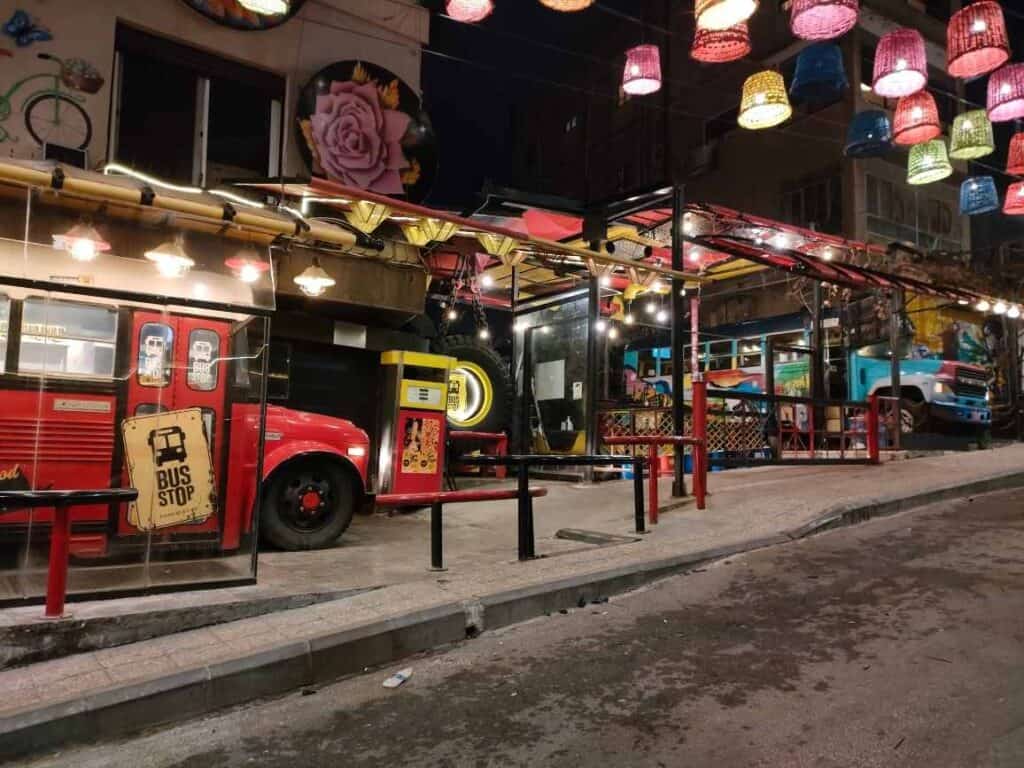
5. Downtown Amman
This was the ancient center of the Roman city at the foot of the citadel.
The two principal Roman roads crossed each other near today’s Grand Husseini Mosque, in the heart of downtown, along which the most important public buildings stood.
The Grand Husseini Mosque was built on the site of a 7th-century mosque. When the Emirate of Transjordan was created in 1921, King Abdullah decided to reconstruct the old mosque for the new capital. He named the mosque after his late father, Sharif Hussein, who led the Great Arab revolt against Ottoman rule. The Grand Husseini Mosque is a reminder of the city’s past before modernization.
Only Muslims can enter the mosque, but you can have a look at the courtyard from the entrance gate.
The public fountain of the Roman times, the Nymphaeum, is a two-story structure with carvings, mosaics, arches and niches for statues, located within a short walk from the Roman theater. The Naymphaum stood where the two principal roads of Roman times intersected.
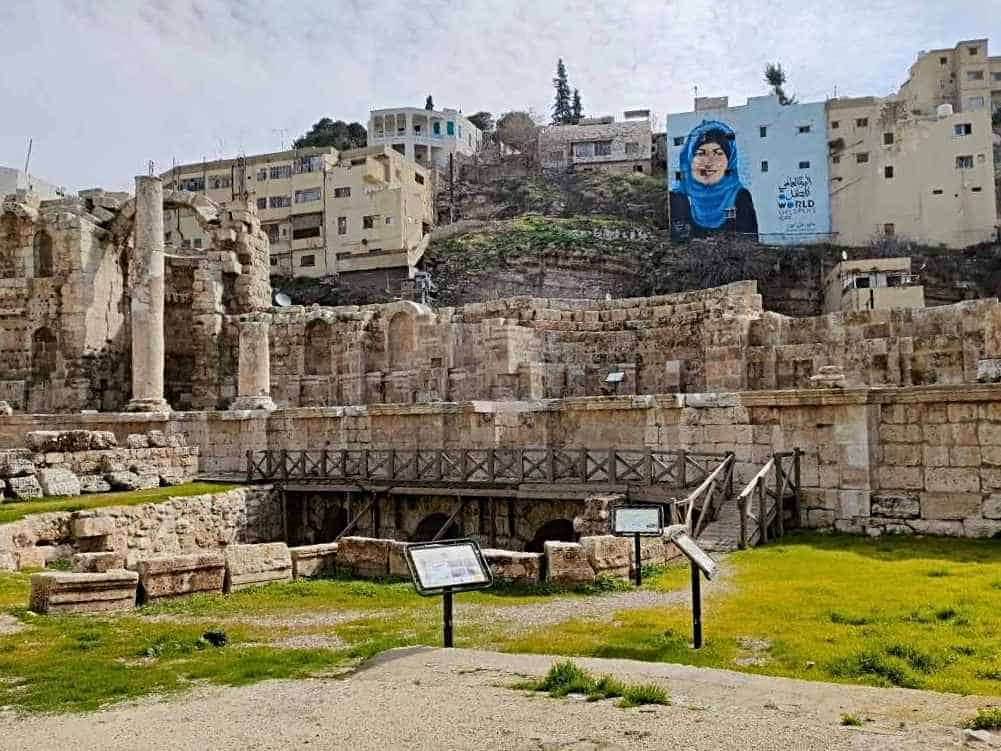
6. Roman theater
The Roman theater of Amman, built between 169-177, is similar to the one in Jerash. They used the natural slope of a hill (former necropolis) to construct the three-story auditorium, which has been preserved in good condition. It could host 7,000 spectators on three levels: the dignitaries took their seats closest to the stage, the soldiers in the middle, and the ordinary citizens on the top. In the ancient world, acting also had a religious significance, which is why theaters also housed a sanctuary. The small shrine above the upper rows of the theater in Amman was dedicated to Athena, a goddess popular with the citizens of the Roman city. The statue of the goddess is now in the National Archaeological Museum.
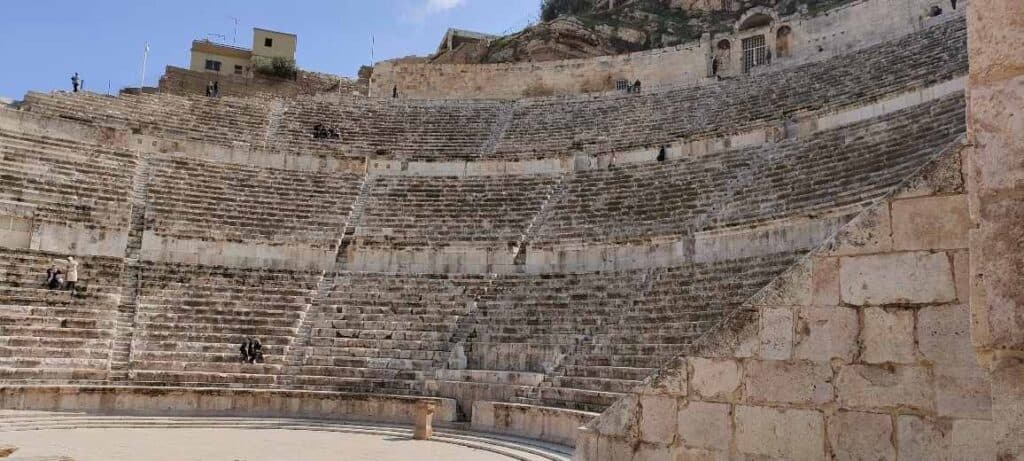
The Roman theater has been restored, unfortunately partly with modern materials, but it has regained its original function in recent years. It is worth passing by when illuminated at night.
The similar-styled Odeon theater is next to the Roman theater.
The Odeon, a smaller theater with less capacity, stands on the other side of the square. It was the scene of poetry reading, speeches and debates.
The Folklore Museum and the Museum of Popular Traditions inside the Roman theater give you an idea about traditional clothing, the Bedouin lifestyle with goat-hair tent, musical instruments like “rababa,” and the traditional costumes of Jordan.
Entrance fee
It is included in Jordan Pass (2 JOD)
Opening hours
During winter (November to April) 8 am- 4 pm, during summer 8 am – 6:30 pm.
7. The Roman Forum
The imposing colonnade in front of the theater is the only remnant of the former forum, once one of the largest public spaces of the Roman Empire (100*50m).
The city center, built in 190, was surrounded by Corinthian colonnades on three sides and the Amman stream on the fourth. The remains of the forum are almost entirely under the modern buildings, and the stream was also forced underground.
8. King Abdullah I Mosque
The national mosque of Jordan, named after the father of King Hussein, the founder of the Emirate of Transjordan, is one of the largest mosques in the entire Middle East, with a capacity of 7000 people inside and 3000 outside.
King Abdullah I was shot by a 21-year-old Palestinian extremist on the steps of the Al-Aqsa Mosque. After the short rule of his father, King Abdullah’s grandson, the most memorable ruler of Jordan, King Hussein, ascended the throne in 1946 at the age of 18. King Hussein laid the foundations of the mosque in the 1980s.
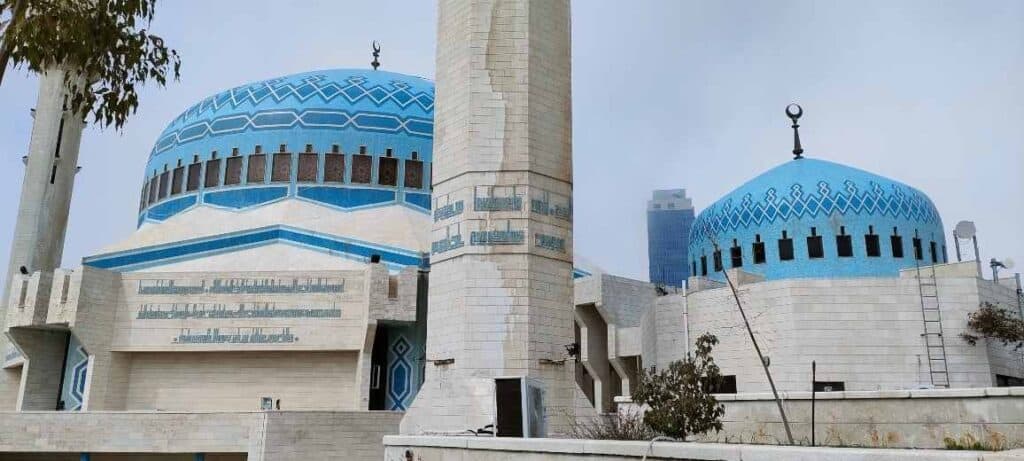
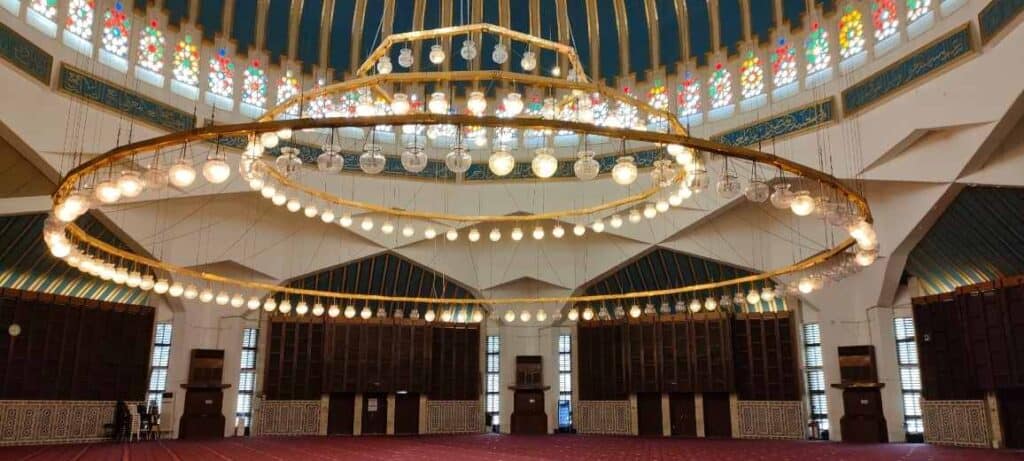
It has been illuminated from the outside since 1995. A beam of light one km from the minaret shows the direction of Mecca.
Several Jordanian businesses contributed to the construction, for which they only used local materials. In the 1980s, a unique dome covered with blue mosaics was added to the modern Arabic-styled mosque. The dome’s blue color represents the sky, while the descending golden lines represent the rays of light that illuminate the 99 names of Allah. The mosque has a smaller prayer room for women and a royal prayer chamber.
Another unique part of the mosque is the splendid chandelier that provides the main lighting. It consists of three circles; the biggest one is 21 meters in diameter, with 168 lanterns. These circles are also decorated with Quranic verses.
How to get there?
It is located at the end of King Hussein street, 45 minutes walk from the citadel.
How to visit the King Abdullah I Mosque?
Outside praying times, the King Abdullah Mosque is open for non-Muslim visitors. Men must wear long trousers; women must cover their legs, arms and heads well.
The entrance is through the small shopping area and visitor center right next to the mosque, where they provide gowns for women.
Opening hours:
Every day 3:20 am- 10 pm
Entrance fee:
2 JOD
9. Abu Darwish mosque
It is one of the well-known mosques of Amman that is unique for its black and white striped decoration. Located on top of one of the hills, you can spot that from many parts of the city. Although non-Muslims are not allowed to enter, it is still worth having a look from outside and enjoying the stunning view of the city.
How to get there?
It is half an hour’s walk from the Jordan museum. Or you can take a taxi.
How to plan your trip to Jordan?
Flights: find the best flight deals on Skyscanner
Rent a car: Check Discover Cars‘ deals for driving around in Jordan (the best way to discover the country)
Insurance: Safetywing is a cheap insurance that covers all medical issues, including COVID-related ones. This is what I use every time.
Hotel/Hostel: Booking.com
Local tours and guides in Jordan: Toursbylocals, GetYourGuide and Viator offer several customized tours to Petra
10. King Hussein mosque (King Hussein bin Talal mosque)- the largest mosque in Jordan
The current ruler, king Abdullah II built this modern mosque in 2005, very close to the Royal Automobile Museum. The best time to visit the mosque is in the evening when the square-shaped mosque enclosed by four minarets is illuminated. The mosque’s mihrab (the niche indicating the direction of Mecca) is an Islamic masterpiece made of oak and walnut wood.
King Abdullah built the mosque in honor of his father, King Hussein.
Opening hours
24 hours except during praying times
Entrance fee
Free of cost
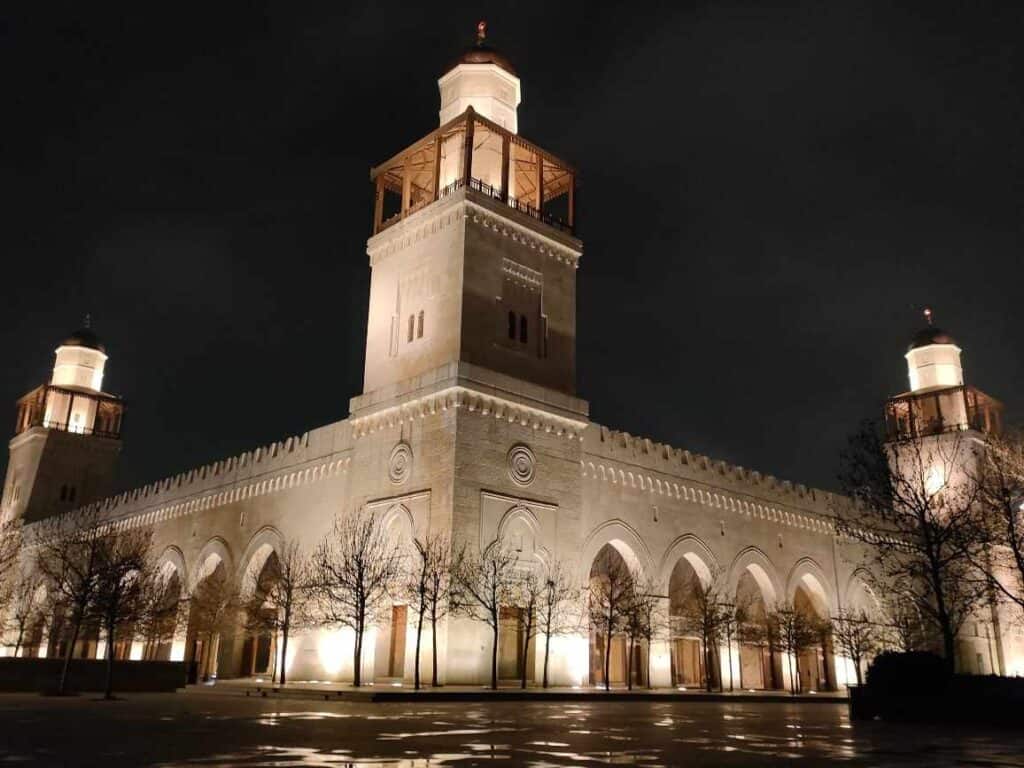
11. The Automobile Museum in Jordan – another highlight of Amman
Close to the King Hussein Mosque, don’t miss to visit this unique museum displaying the car collection of the former king from the pre-1950s till modern days. Apart from cars, the collection contains motorcycles as it was one of King Hussein’s favorite pastimes. The museum displays photos where the king used the cars during special ceremonies and meetings with head of states and other prominent persons.
Even is you are not fond of cars, this museum is more about an insight into Jordan’s modern history and can be one of the highlights of your visit to Amman.
Opening hours: Closed on Tuesday, other days: 10am – 7pm, except Friday (11am – 7pm)
Entrance fee:
3 JOD (not included in the Jordan Pass)
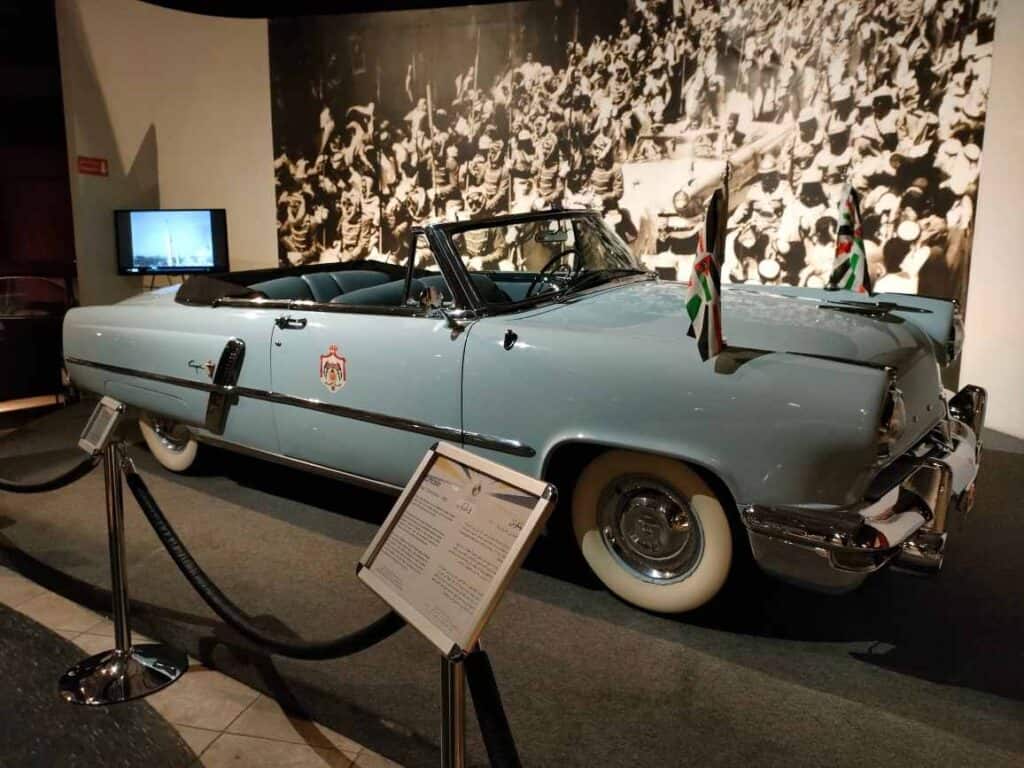
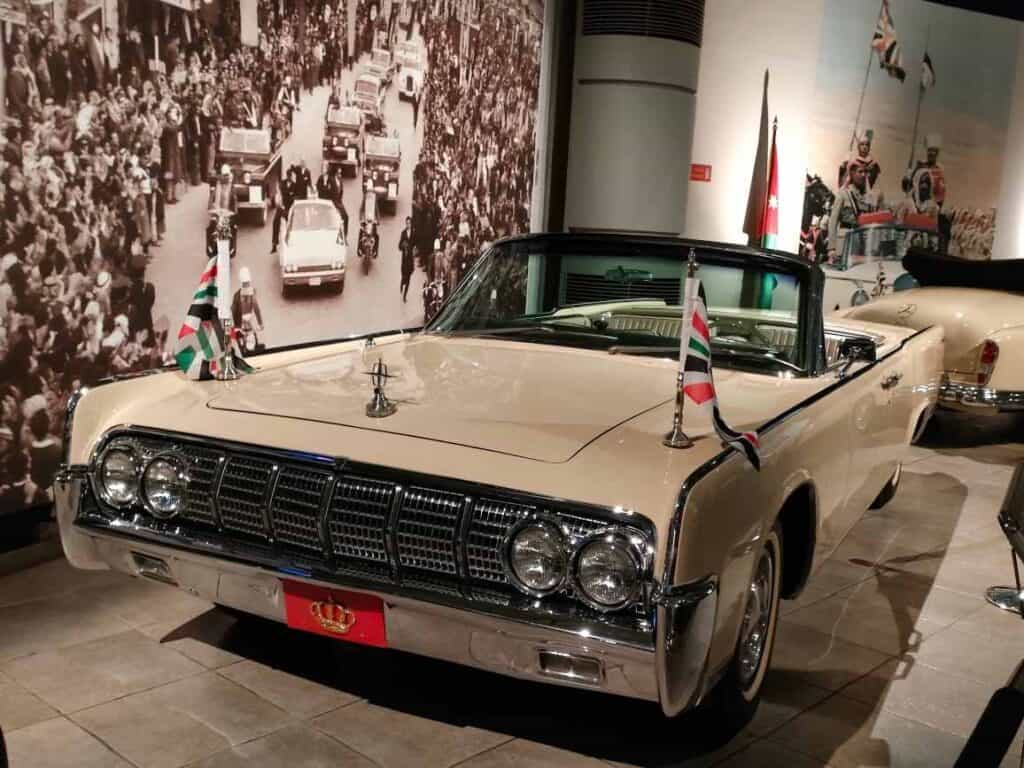
Where to sleep in Amman?
There are plenty of low-middle and upper-budget hotels in Amman downtown or in one of the elegant suburbs.
Hostels
The Cabin (dormitory +private rooms)
Low-budget hotels
The Boutique Hotel (this is where I stayed in Amman and I loved it)
Mid-range hotels
Jabal Amman hotel (Heritage House)
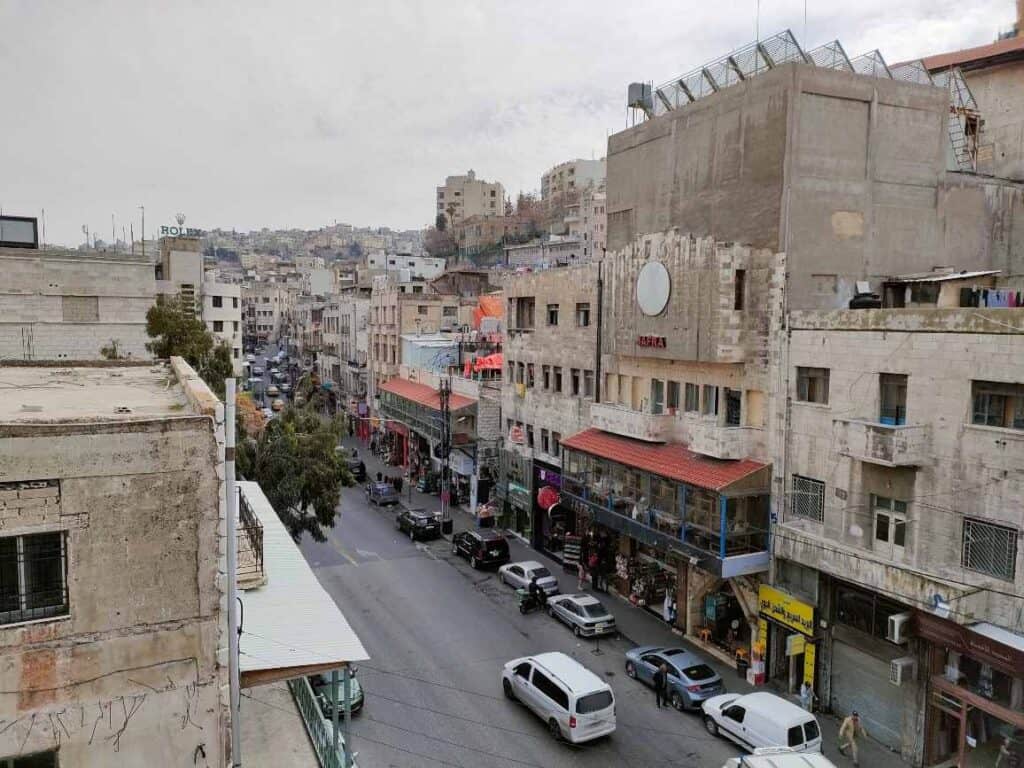
Local tours in Amman
1. Free walking tour in Amman
You can take a free walking tour in Amman, organized by the Amman Pasha hotel in the downtown. Call or text Jafar on WhatsApp +962 79 7799 749 or send a direct message to the page to book your spot. They also organize Amman by night tours.
The tour covers the downtown area with the Bazaar, nymphaeum, Grand Husseini Mosque, rainbow street, and some hidden gems that you would otherwise not discover, like the old Post office with a collection of old photos, or the “Thief market”.
The tour is free, but of course, you are expected to give some tip if you are satisfied.
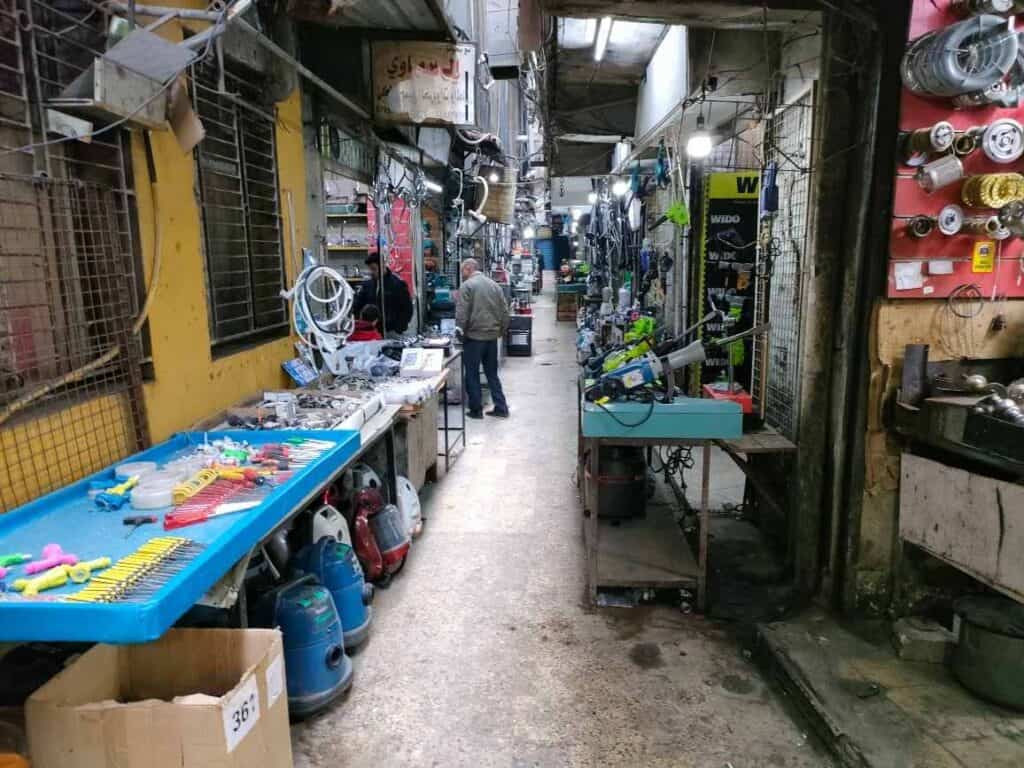
2. Other local tours in Amman
Street food and downtown tour in Amman
Half-day cooking class in Amman
Amman sightseeing with optional Arabic mezze lunch and Turkish bath
Take a local cooking class in Beit Sitti (the menu changes according to the day)
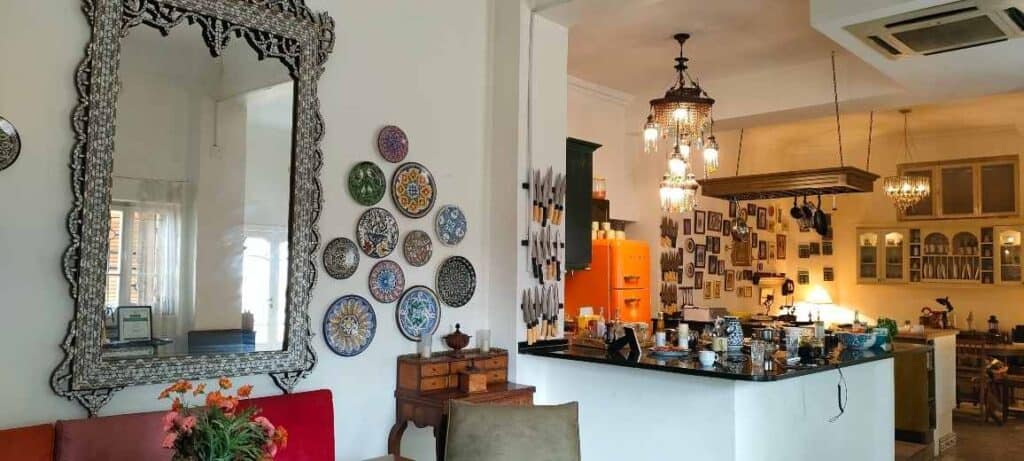
Where to eat in Amman?
Falafel: Hashem restaurant
This small restaurant in a small courtyard is the most recommended place to try falafel in Amman. It is highly recommended!
Knafeh: Al Haj Mahmoud Habiba and Sons
There is always a long queue at this place that makes you wonder what people are waiting for. Then I recognized everybody coming to buy knafeh, the Middle Eastern sweet specialty. So I also joined the queue, and I was not disappointed at all.
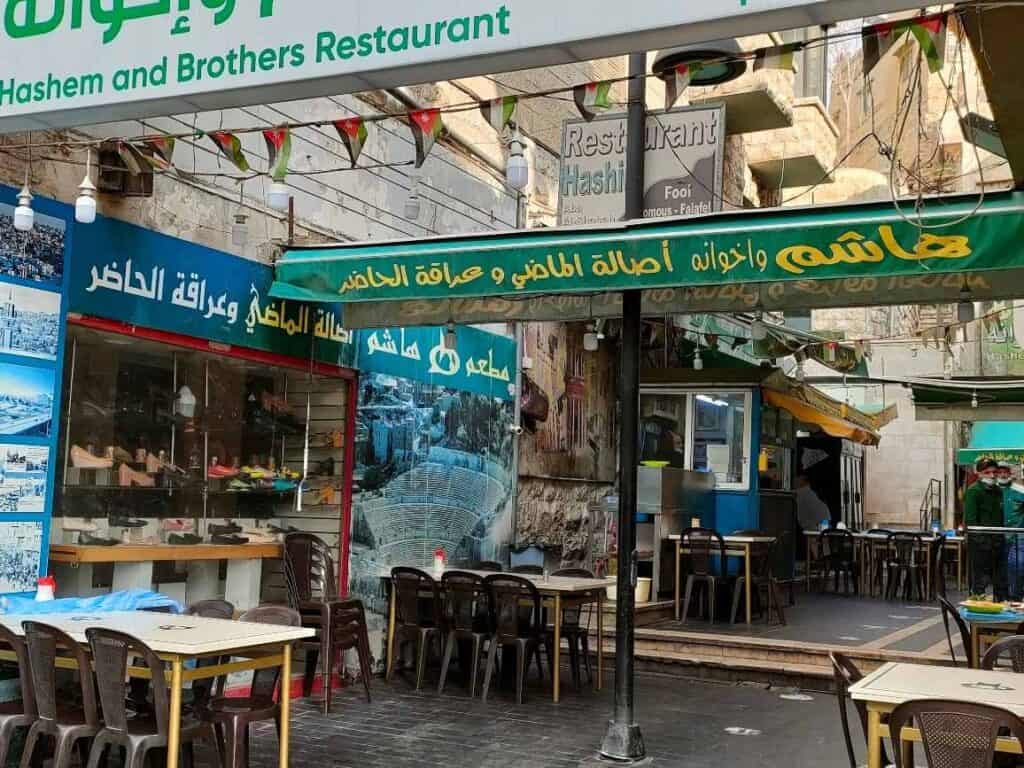
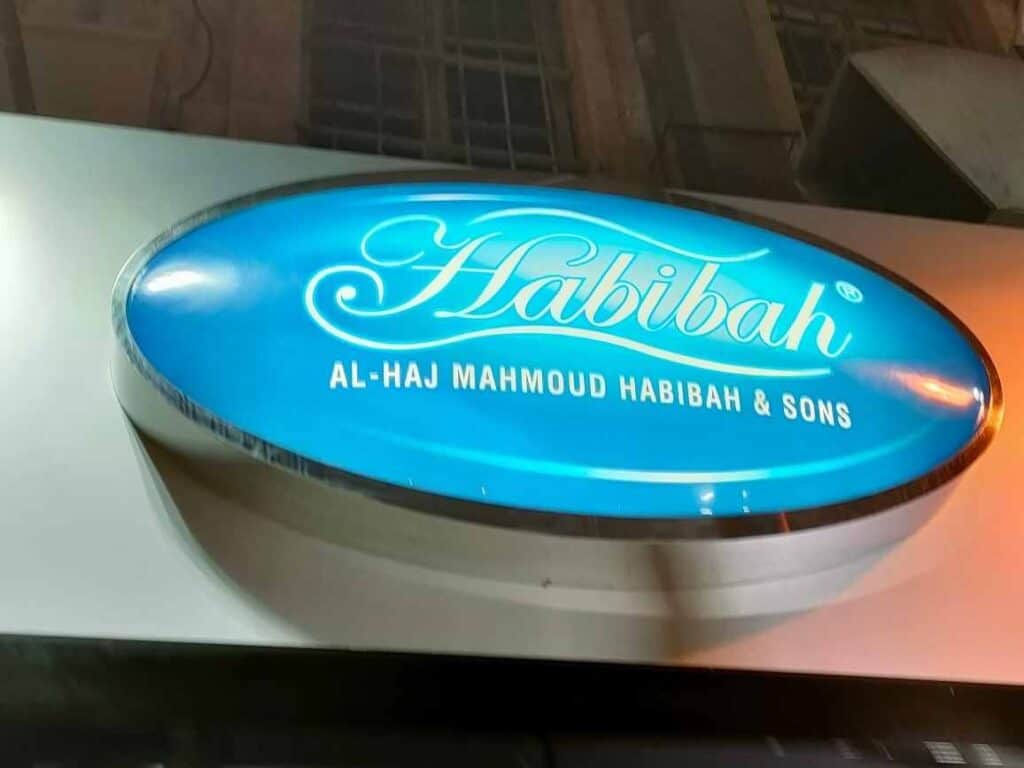
The best day trips from Amman
There are plenty of possibilities to make day trips from Amman to discover other parts of Jordan. However, if you have more time, I recommend spending some nights at Petra, the Dead Sea and Wadi Rum to get immersed in local culture.
These are the best day trips from Amman:
– Madaba, Mont Nebo, Hammamat Ma’in hot springs
– Petra
You can book your daily tours from Amman here
I hope this travel guide is useful to you to have the best one-day itinerary in Amman. It is not the most charming capital in the Middle East, but with some guidance, you will get the feeling of the capital, the most vibrant city in Jordan. If you plan to visit other places in Jordan, check my article about the best 5-7 and 10-day Jordan itinerary.
Other articles about Jordan
The perfect Petra one and two-day itinerary in Petra
How to visit the Jordan desert castles on a day trip from Amman
Jerash, Ajloun and Umm Qais: a perfect day trip from Amman
Other posts about the Middle East
Lebanon
10-day itinerary to visit Lebanon
How to spend 2-3 days in Beirut
Travel guide to Tripoli, Lebanon
Best books to read about Lebanon
Traveling around Lebanon during the economic crisis
Iran
What you can and cannot do in Iran
45 things you must know before traveling to Iran
The best books to read about Iran
The best 2-week itinerary in Iran (the classical route)
All you need to know about the Iranian currency
The best places to visit in Tehran (museums, palaces, religious sites)
The best things to do in Tehran
Travel guide to Tabriz, North Iran
Travel guide to Mashhad, the holy city of Iran
Best things to do in Lahijan, the city of tea in Iran
Best things to do in Ramsar at the Caspian Sea
Visit Varzaneh desert, Toudeshk, Mesr desert and Garmeh from Isfahan
Iraq
All you need to know before traveling to Iraq
What to visit in Baghdad in 3-4 days
The best books to read about Iraq (constantly updated)
Visiting Lalish, the holy place of Yezidi people
How to visit Babylon and other places around Hillah
Most interesting places to visit in Iraq
Pin it for later!
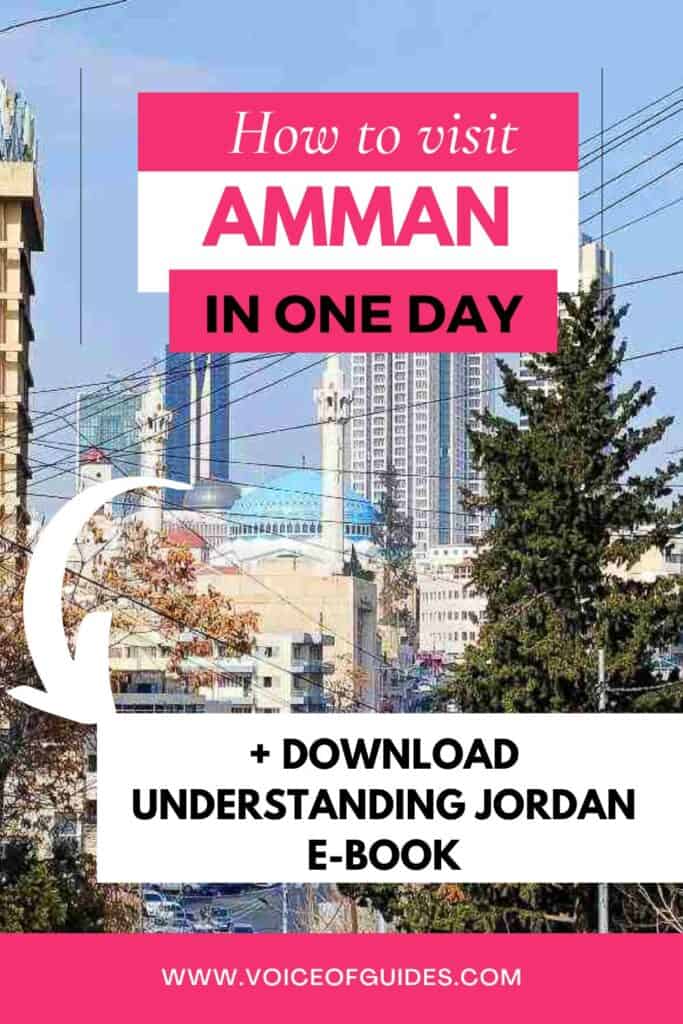

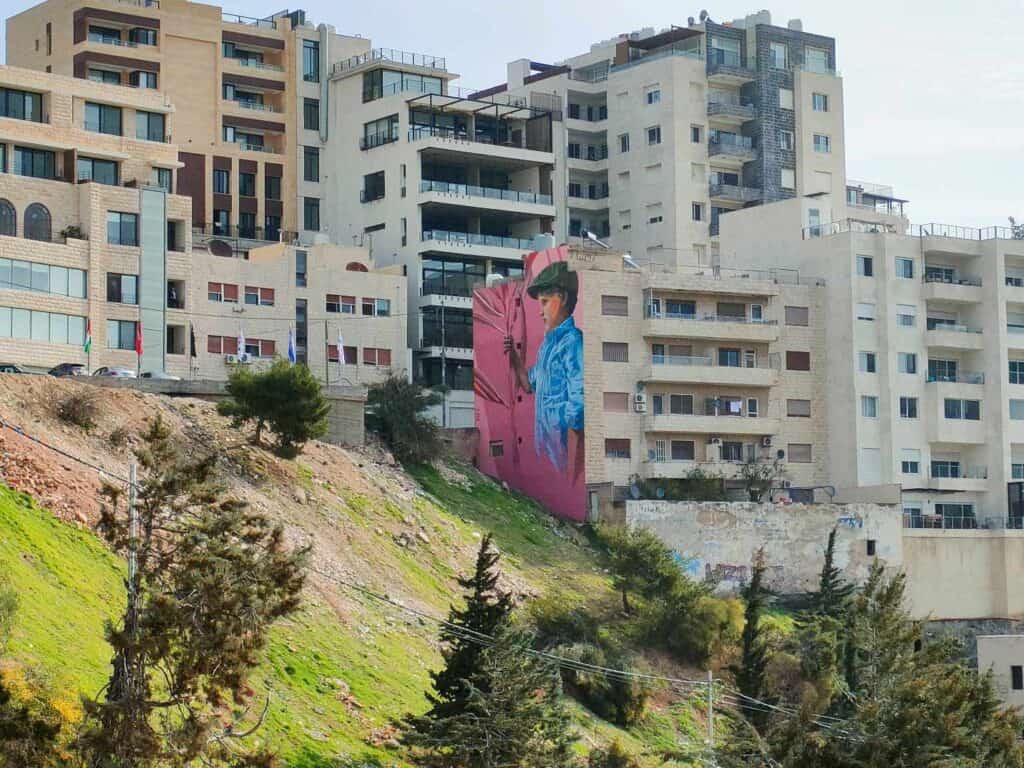

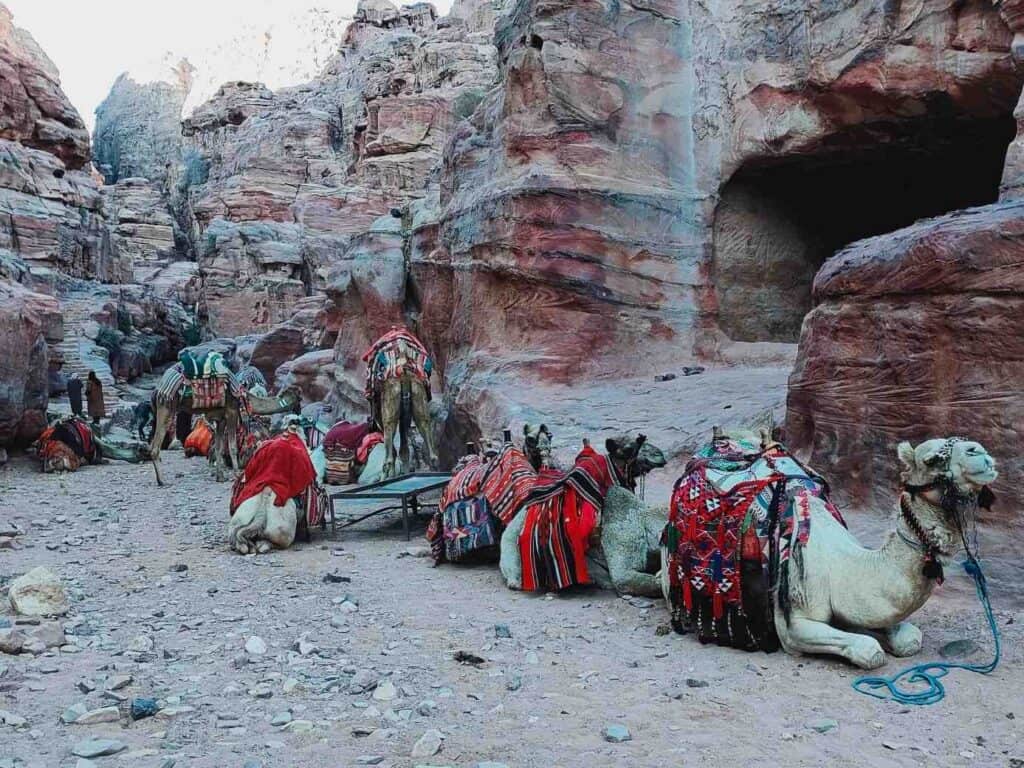
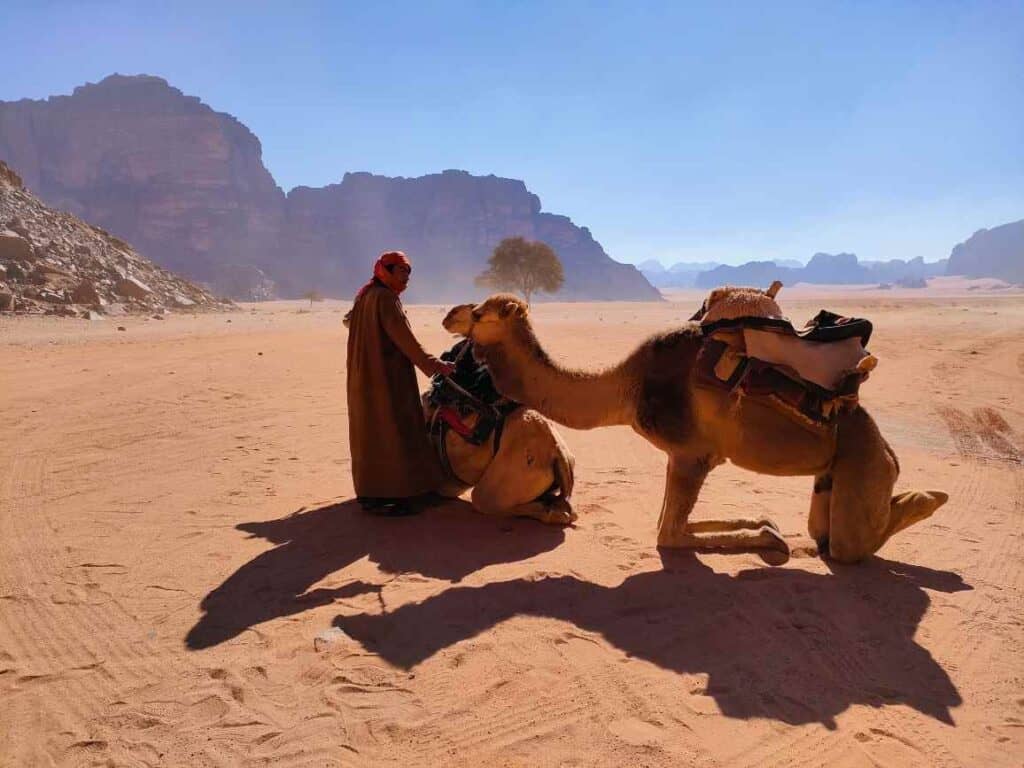
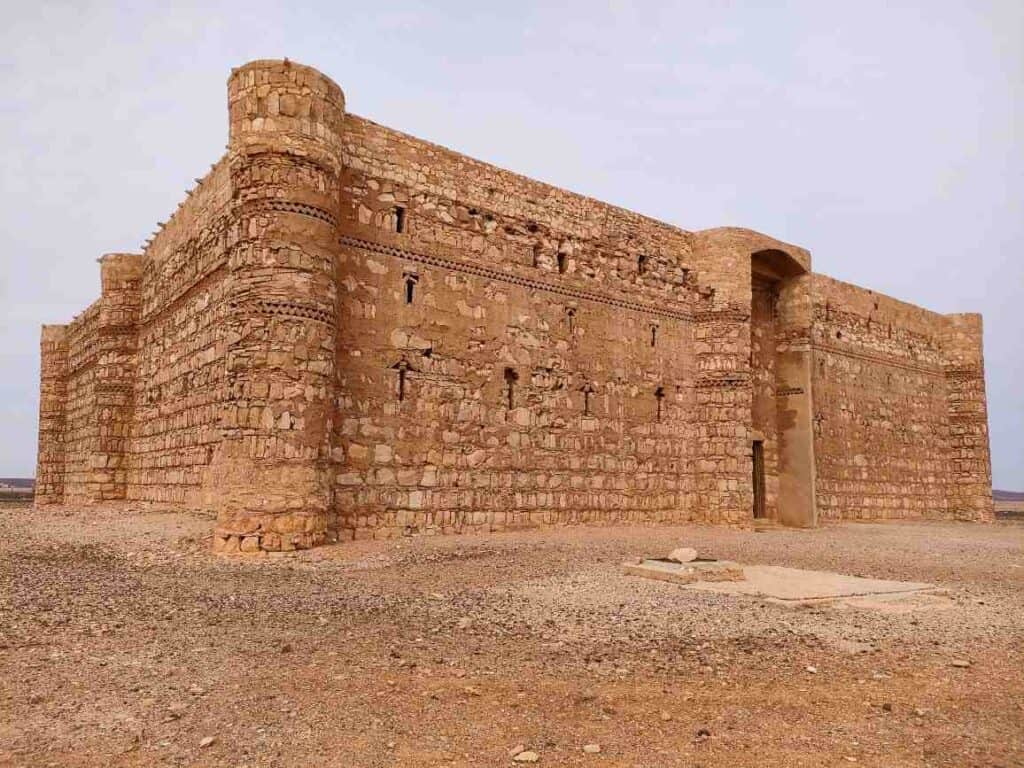
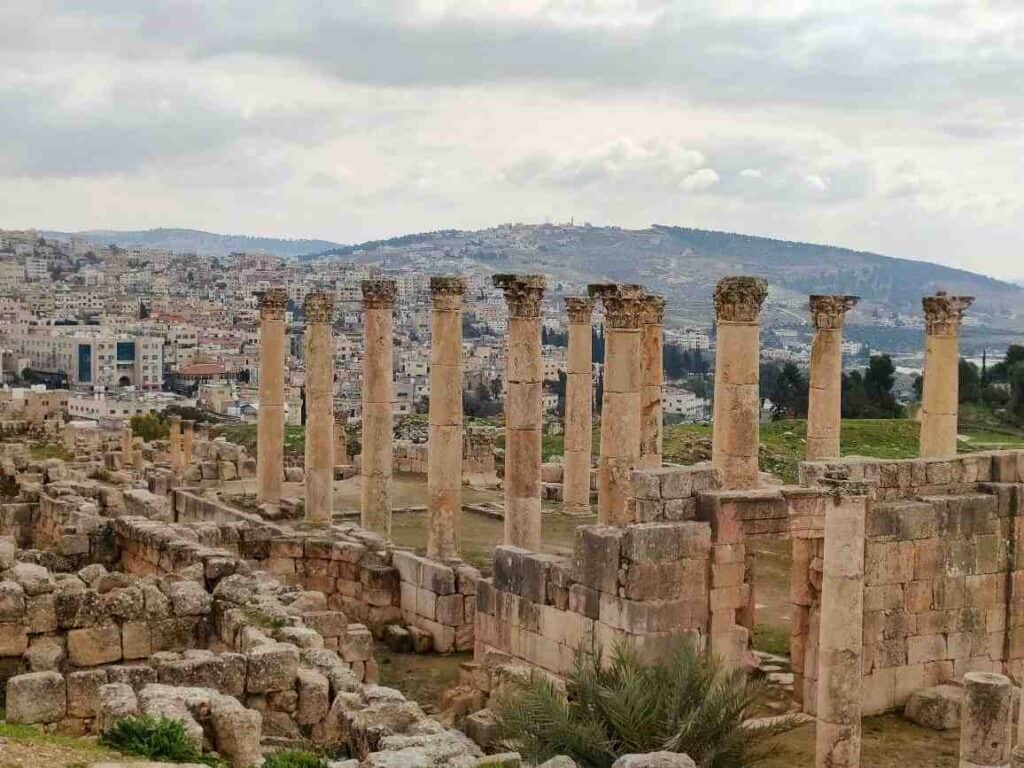
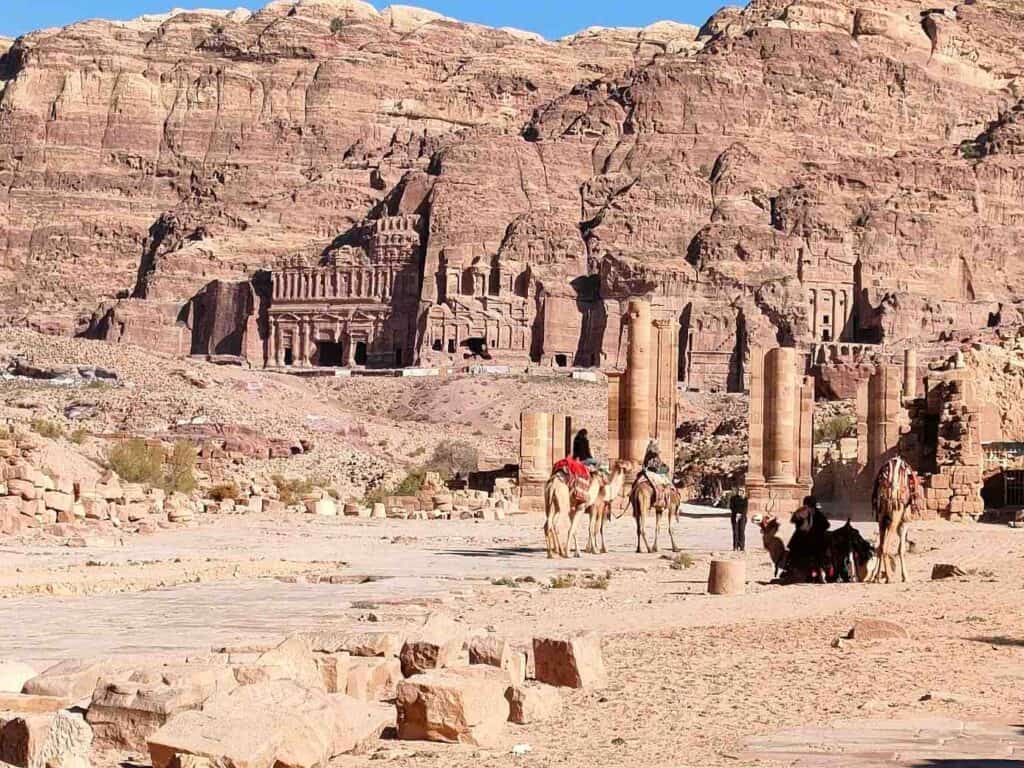
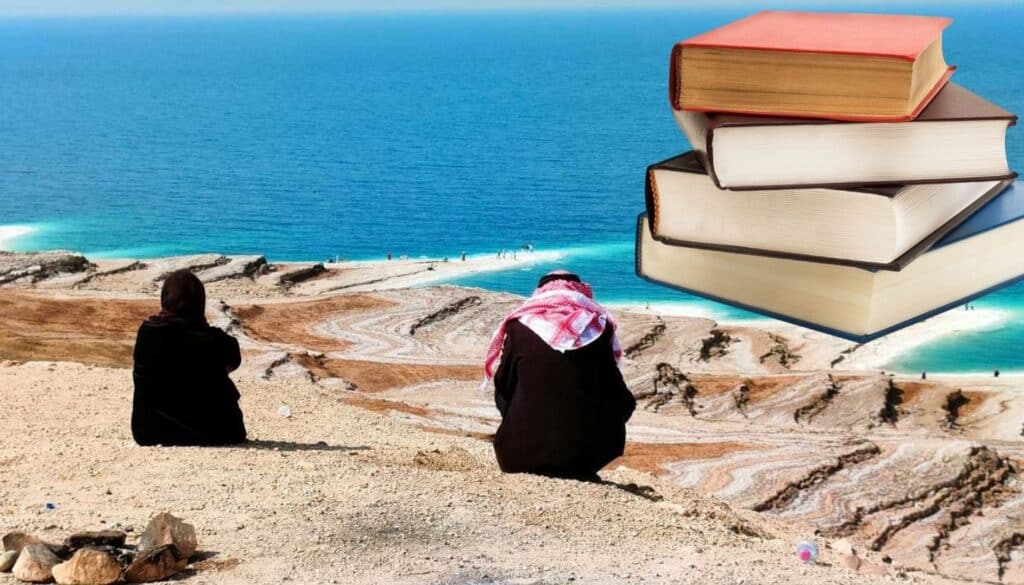
Wow nice read! I am Abu, planning to visit Umm Qais. I want to know how far is Umm Qais from Amman. by the way, I am doing my degree in mechanical engineering from the University of Wollongong in Dubai.https://www.uowdubai.ac.ae/degrees/bachelors/engineering/bachelor-engineering-mechanical. Am super impressed by your article!
I’m glad you like it. It is around 2 hours’ drive, approximately 120 km. Have a good trip to Umm Qais!